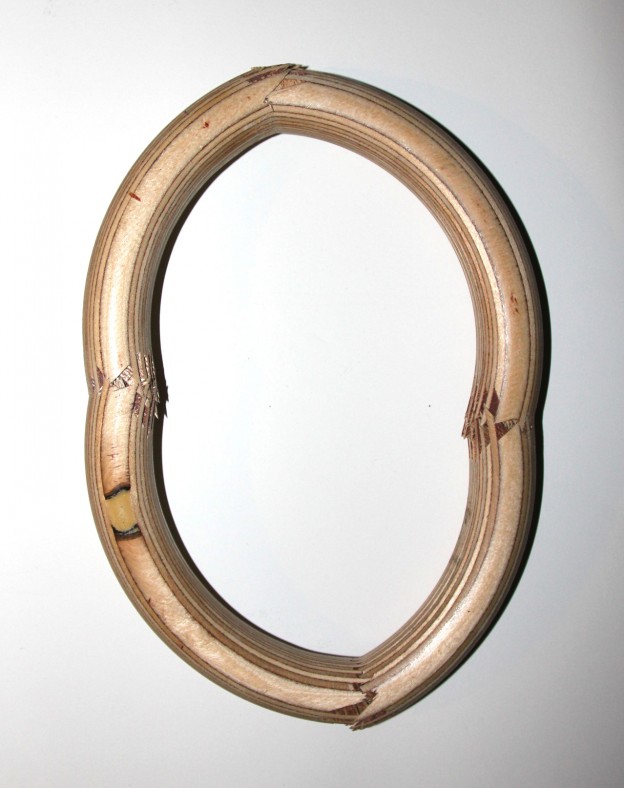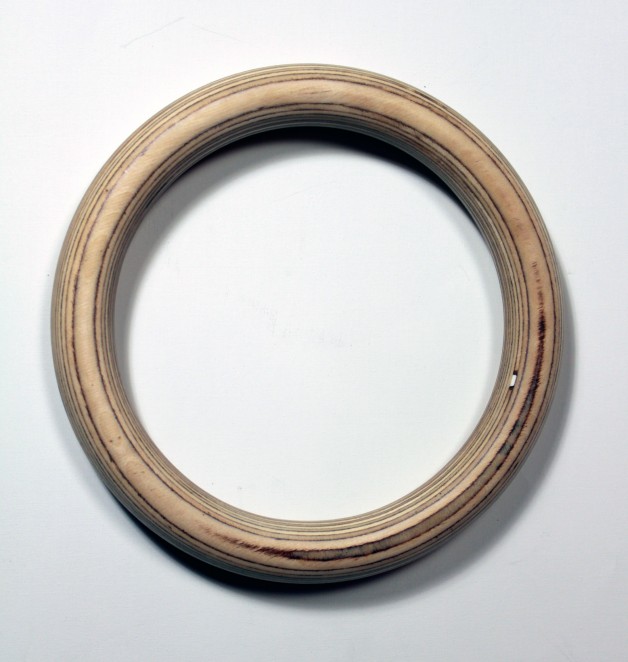This is a question that I am sometimes asked. The consensus from manufacturers seems to be a maximum load of 250kg. They don’t seem to qualify if this is the maximum load or maximum user weight. One assumes this relates to the users weight, so one can halve that for a single ring as it is likely to be calculated based on them being used in pairs but with a very dynamic load. This is what I mean by ‘very dynamic’. Few of us have models built like this or put our rings to such tests:
TOne, on Fetlife, did a test on a wooden ring with some very reassuring results. As he points out, this was only a one-off unscientific test so one can’t draw any hard and fast conclusions part from the ring tested was damn strong. Here’s what he said:
“This is not a scientific test! These are natural material and, as with natural fiber rope, the properties of one item can only give a general approximation, at best, of any other. This is the story of how we broke one ring – nothing more.
I used a climbing runner rated for 22kN wrapped multiple times around the ring and attached to a tempered steel chain rated for 6000lbs safe working load, which was hung from the steel beams of the ceiling. With the ring at a height of about 7.5 feet, I attached the nice webbing straps (that had been included with my purchase) to the ring so that they would hang down to near the floor. No metal or hard edge was in contact with the wooden ring.
I wanted to test a simple static load, so no bouncing, lifting, or swinging occurred. With three other willing volunteers, all of whom are Gentlemen of Stature™ like me, I began a process of stepping onto the straps. One bloke, then two, then three, and so on.
At about 850lbs, the ring held firm. At 1100 pounds, the ring held for two or three seconds before a sound like paper shearing occurred and the ring split nicely in half dropping all four of us intrepid investigators unceremoniously to our feet.
A post-mortem analysis of the ring showed not only the shearing and separating of the layers at the sides, but also some stressing at the top and bottom that would have been under the straps.”
Fetlife users can see a picture of the broken ring here. Here’s a close-up of the stress fractures at the top of the ring. Bear in mind that 1,100lbs (nearly 500kg) is not the breaking point, it could be anywhere from 850lbs (385kg-ish) upwards as weight was not added gradually but rather by the substantial increment of ‘one more big guy’. One more pound might have done it.
What is significant is the degree of distortion. This gives me a lot of confidence. I assume that this occurred gradually and would provide a very visual warning before failure, unless a massive shock loading was applied. I’m no expert on forensics or metallurgy but my guess is that immediate catastrophic failure is more probable with metal but very unlikely unless there’s a manufacturing fault.
Given today’s litigious culture and that such rings are supplied to schools and public gymnasiums, I would expect failures to be very few and far between. No doubt, if such a risk was apparent, the avid pursuit of H&S would have picked it up long ago. This doesn’t mean one should be complacent. Rigorous (or should that be riggerous?) inspection of your hardware should always be part of your routine.
Personally, I love my ring (ahem!), which was salvaged from a school gym. It’s light and the generous diameter doesn’t stress the rope…and unlike a steel one doesn’t knock what little sense I have out of my head when I walk into it 🙂 That’s why I have sourced identical wooden shibari rings for ESINEM-Rope but if you don’t like those I have chunky macho black powder-coated steel tubular suspension rings of the same dimensions.
Of course, for a ring to fail without a major defect, everything else in your rig would have to be able to withstand a sufficiently high load. Given that natural fibre rope, even used doubled, will break at much lower loadings, the ring is likely to be far from the weakest link. Your rig is never stronger than the weakest link.
One should always bear in mind that your software, i.e. the body in the rope, is the most at risk from shock loadings and that the weakest link can be you. You because most accidents are not hardware failure but ‘pilot error’. So often I see ‘The TK’, whatever that might be given the infinite gote variations, blamed for injuries. In a large percentage of these cases, a quick look at the poster’s profile will reveal a poor understanding and implementation of this tie. It’s not good enough to make something that looks a bit like an aeroplane, it also needs to fly like one.
UPDATE
I recently got a friend in the scaffolding business to set up his 2-ton load cell. It wasn’t the perfect device due to the short travel but it is accurate. We tested one of my wooden rings up to just over a ton before it started to give way seriously. However, cracks appeared before it got this bad at 1.1 tons so it’s well within recommended safety ratings and has a slow failure.


